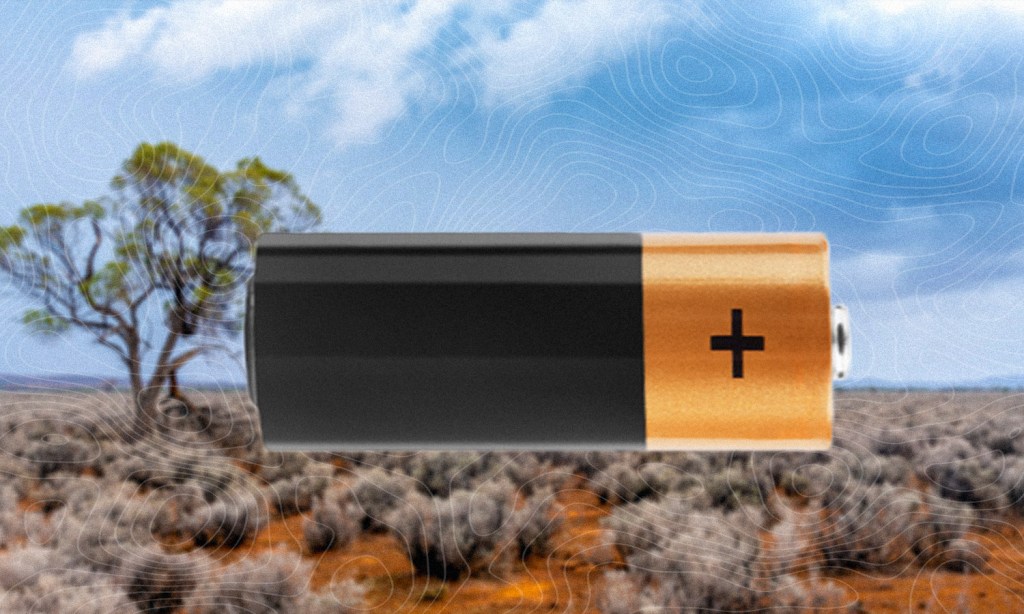In Australia, we like things big. Not in an American Supersize Me-kind of way. No, we like our big stuff to be totally bizarre and located in out-of-the-way roadside towns.
The latest instalment in the ‘big things’ series Australia has been ironically engaged in for the past few decades will be the ‘big batteries.’ However, unlike the Big Bogan in NSW or the Big Prawn in WA, this one is actually functional and, in fact, could be the secret to our renewable energy future.
Enter BlackRock, the world’s largest multi-national investment company, which appears to be betting big on renewables and has chosen Australia as the place to splash some of its cash.
The firm, through its subsidiary, BlackRock Real Assets, has committed to funding nine big battery projects right across Australia to the tune of $1 billion.
BlackRock announced today that they had agreed to purchase the Melbourne-based battery development Akaysha Energy, the current owners of those nine big battery projects that are under construction in Australia.
Combined, the big batteries will store thousands of megawatts of power, providing backup energy for when renewables — like wind and solar — can’t feed the grid.
The Australian government, under Anthony Albanese, has recently set a target for 82% of the national energy grid to be powered by renewables by 2030. It’s a massive undertaking and one that requires storage technology if it is to run smoothly.
“This is the largest investment BlackRock has made into battery storage by some margin,” BlackRock Asia-Pacific’s co-head of climate infrastructure, Charlie Reid, said.
“That’s creating this fundamental need for battery storage, which, in some other markets, hasn’t arrived yet. For Australia to become a renewable energy superpower, battery storage is going to be required at vast scale.”
It’s BlackRock’s biggest investment in energy storage technology to date and is all but guaranteed to speed up Australia’s transition away from burning coal to heat and power our homes.
Three of the projects currently underway include the 150MW battery energy storage system in the Western Downs of Queensland and the Tasmanian-first big battery system near Launceston.
By far though the biggest project is the Orana battery, located near the central-western town of Wellington in New South Wales. This battery is projected to have a capacity of up to 400MW, storing as much as eight hours of power, which vastly dwarfs anything that Australia has built to date. Six of their other projects have yet to be announced but the team thinks they’ll have them all up and running in a three to five-year period.
BlackRock plans to use the skills and insights of the rollout in Australia to push Australian engineering across Asia in developing similar projects. Speaking to Renew Economy, Reid explains that the plan is to get Australia’s energy grid back on track before replicating those ideas abroad.
“If you go back to 2017, 2018, Australia’s very high from a global clean energy perspective in terms of market ranking, and then projects ran into MLF (marginal loss factors, or grid congestion) issues, grid issues, etc. and it felt quite low in the ranking,” he said.
“I would say through a confluence of factors Australia is now emerging as one of the leading markets globally overall as part of the energy transition.
“And as it relates to battery storage it’s in the top few countries globally, owing to the amount that’s been deployed, the need for battery storage, and some of the expertise frankly.
“So I think that part of the interesting proposition for Australia now is, yes, there’s lots to do domestically, but how can Australia export its skills, technologies, raw materials to the world as part of the net zero transition?”
The latest announcement is surely another nail in the coffin for coal and other polluting energy sources which, frankly, can’t be gotten rid of fast enough.
Related: In an Aussie First, a Federal Environment Minister Might Reject a Coal Mine
Related: Australia Could Phase Out Coal In a Decade — Here’s What Would Need to Change
Read more stories from The Latch and subscribe to our email newsletter.

